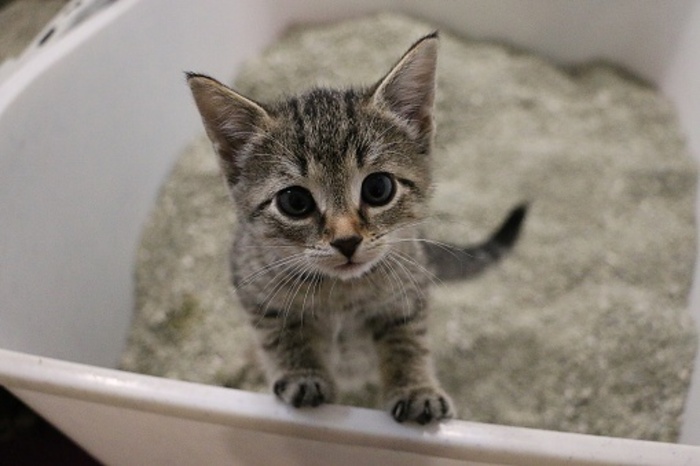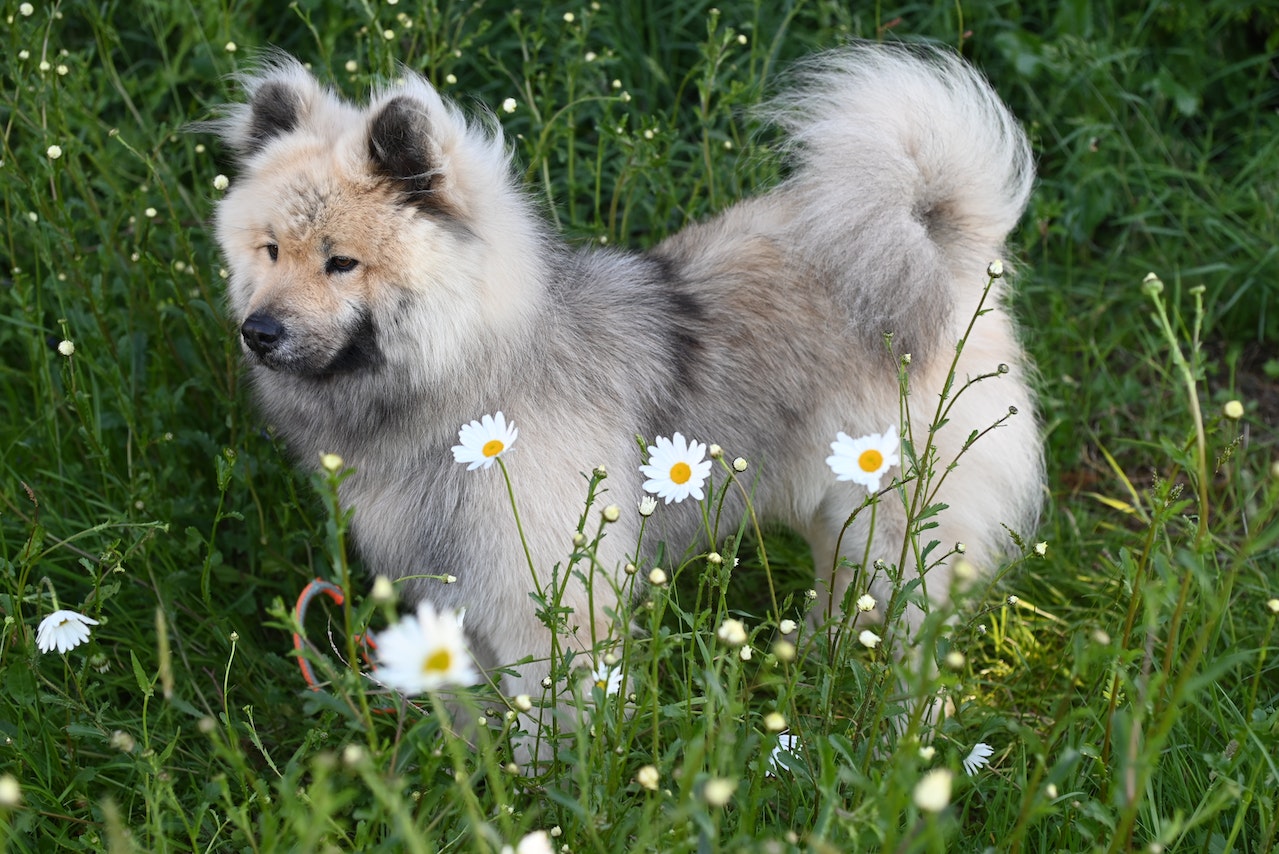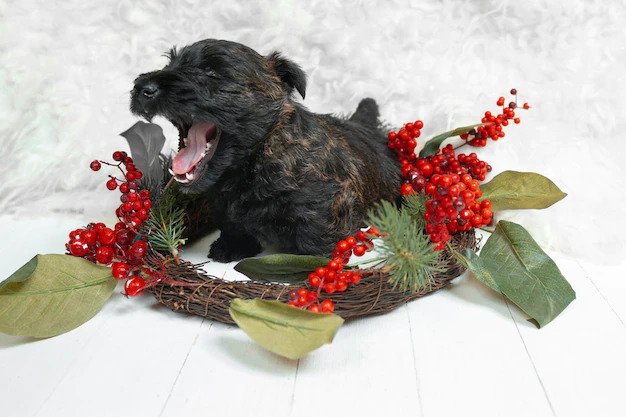
Regardless of what holidays we celebrate, they are typically associated with delicious food and beverages, relatives and friends visiting, and having much fun and joy. When it comes to Christmas, the euphoria we feel is even bigger and many of us start to prepare for this holiday at least a few weeks in advance. Regardless of the positive mood we usually associate with holidays, they can also have another side, which is not so pleasant. We are not talking about the rush and money we spend every year on preparation and presents, but about the potential risks that holidays hide for our pets.
As responsible pet owners, we need to ensure that our beloved pets are safe and healthy regardless of the situation. Today we will talk about “holiday hazards” for our pets (dangerous items during Christmastime in particular) and how to avoid them.
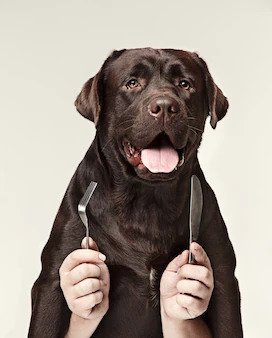
Food
You may already be familiar with human food dangerous for dogs. However, we will list again some types of food that you should not feed your dog, regardless of how delicious or beneficial for humans they are.
Chocolate
Theobromine and caffeine are the main substances in chocolate that are toxic for dogs. Dogs can not metabolize them the same way humans can. The bigger the content of cocoa in the chocolate is, the more dangerous it is for dogs. This means that dark chocolates are more dangerous for dogs than milk and white chocolates. The level of toxicity depends on the type of chocolate, the amount of chocolate your dog has eaten as well as your dog’s weight. Some veterinarian clinics use the so-called “toxicity calculator” to determine the level of intoxication. In case your dog got intoxicated, it is very important that you can provide accurate information about your pet’s weight and health as well as about the type and amount (if you are aware of the latter) of the consumed chocolate. Signs of intoxication usually include diarrhea, vomiting, panting, excessive urinating, and increased heart rate. If the case is more serious, further symptoms like seizures, kidney, liver, or even heart failure may also occur. If you have any doubt that your dog or cat has digested chocolate, you should consult a veterinarian immediately.
Xylitol
Xylitol is widely used as a sugar substitute, and you can find it in a lot of products, such as gums, yogurt, baked products, candy, toothpaste, mouthwash, and even in medication like lozenges. Xylitol is extremely toxic for dogs and can cause anemia, shaking, and seizures. Symptoms occur within an hour from the moment of intake. Just like chocolate, the level of toxicity depends on the amount of xylitol in the product your dog has eaten, as well as on the dog’s weight. Mild cases of toxicity can include hypoglycemia, while severe cases may be associated with organ failure. Tremors, diarrhea, vomiting, fatigue and lethargy, and even seizures are among the symptoms your dog can have after being intoxicated.
Grapes and Raisins
According to recent studies- tartaric acid, which grapes contain, is the main reason that grapes are toxic for dogs. Previous studies state that there might be a fungus or a specific drug in grapes, which causes a toxic reaction. Symptoms like dehydration, abdominal pain, fatigue, vomiting, increased thirst, and even organ failure are symptoms that may accompany the process of intoxication. It is crucial for your dog’s health that you consult a veterinarian immediately, as kidney failure could occur within 48 hours. If you have any doubt that your dog may have ingested grapes or raisins, you should closely monitor him/her for any of the symptoms listed above or any deviations from his/her standard behavior.
Rough Bread Dough
The bread itself is safe for dogs - of course, you should not let your dog eat bread regularly, and rather give it to him/her in moderate amounts on certain occasions. However, it is not the same case with rough bread dough. Rough bread dough will continue raising in the stomach, which will result in a bloated abdomen. Moreover, rough dough can contain bacteria that will make your pet sick. Another negative effect that eating a rough bread dough will have on your dog is associated with the process of fermenting yeast (active/live yeast) when eaten with food high in carbs. During the process of fermenting, alcohol will be released and then absorbed by the body. Alcohol can lead to intoxication and symptoms like decreasing blood pressure, blood sugar, and body temperature can occur. Organ failure and seizures are more symptoms that can occur in severe cases.
Bones
Imagine that you’ve spent several hours in the kitchen preparing a delicious lunch/dinner, including turkey or ham meat. The whole family is around the table enjoying the meal and your beloved paw friend gives you that look with his/her big loving eyes, which you just can not resist. Feeding him a small bone should not be a problem, right? Wrong! Cooked bones become very fragile and can easily get stuck in your paw friend’s throat and make him/her choke. Cooked bones, especially when small, can be dangerous for pets. Choking, constipation, rectal or mouth bleeding, and obstruction of the digestive system are possible results that may occur after feeding your pet poultry bones.

Alcohol
As you have already learned from the previous paragraph, alcohol is toxic for dogs. Never indulge in the temptation to give your drink from your wine, whiskey, liquor, or whatever type of alcohol you like to drink. It is the same case with beer, as hops which are usually one of the beer ingredients can lead to intoxication. Diarrhea, vomiting, panting, shaking, high temperature and even seizures are among the symptoms that can occur. Organ failure can also be caused in severe cases of intoxication.
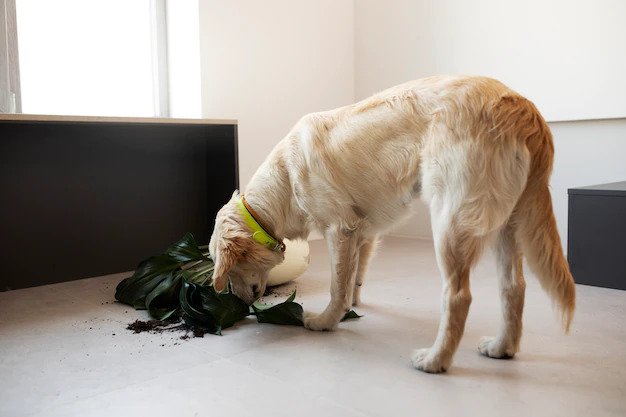
Plants
Holly berry, Yew, Lillium, Mistletoe... these plants that we typically associated with holidays and Christmas in particular. They are definitely very beautiful and become a part of many people’s homes worldwide. Despite bringing a holiday atmosphere, they can be very dangerous for our pets. Even a small bite of these plants can cause intoxication, and abdominal pain, and lead to kidney failure. If your dog/cat has eaten a really small amount of these plants, they are likely to start shaking their heads and licking their lips. Excessive drooling is also likely to occur. Symptoms of irritation of the digestive tract can be abdominal pain, deviation from the normal heart rate, and decreased blood pressure. Most severe cases can include coma and even death.
It is essential that you take action to prevent your pet from having any contact with plants that are toxic for him/her.
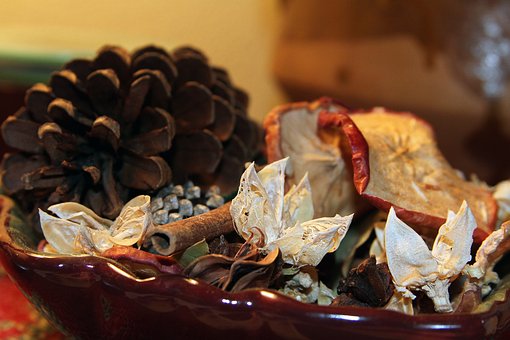
Potpourri
Natural fragrances and beautiful decorations for your home made with dried plant materials are preferred in many homes, especially during the holiday season. When thinking from your pet’s perspective, things look a bit different... You should not let your dog or cat (especially the latter) get access to any mixtures of spices, herbs, or flowers. Several licks are enough to cause breathing issues, shaking, and fever. Irritation of the mouth, including burns, digestive issues, as well as access of foreign bodies to your pet’s body are other possible hazards that you should be careful of. Surgery could also be administered in order for an item to be removed from your pet’s body.

Decorations
Let’s admit it- decorating our home is the main (or at least one of the main reasons) we enjoy holidays so much. By decorating our home, we change its entire atmosphere and the feeling it provides. We feel instantly happier and filled with joy.
What about our pets? Our dogs and cats are also likely to show a big interest in lights, ornaments, sparkling and glittering items, such as tinsels and ribbons, or just anything, that is new to them or seems interesting. Pawing and nose-nudging at them and of course-chewing, are among the actions that our dogs are likely to take toward the items of interest. Electrical burns, intoxication due to chemicals, digestive issues, injuring their mouth and skin, as well as further complications such as pneumonia, may occur. Surgical intervention may be needed in some cases. You should try to avoid your pet access to any potentially dangerous items, or just opt for a simpler decoration this year.

Ice Melt and Antifreeze
Rock salt is dangerous for your pet for several reasons- it can cause irritation of the skin and paws when your pet walks on it; it can lead to vomiting, diarrhea, and other gastrointestinal issues.
The use of antifreeze logically increases during the winter, as it helps our cars, RVs, and plumbing system remain functioning, as it prevents these from freezing. If you have a cabin that you do not visit frequently, you may consider putting antifreeze in the plumbing system. You should be very careful when visiting your property accompanied by your dog/cat and make sure that they won’t drink out of the toilet or otherwise have access to anti-freeze. There is the so-called RV antifreeze, which unlike regular antifreeze is non-toxic and specially designed for use in the plumbing system. It typically has a pink color compared to the green color of regular antifreeze.
You should also keep in mind that antifreeze might be featured in some decorations, i.e. some snow globes. If these break and your pet ingests some of the substance, he/she might get poisoned. Thirst, fatigue, as well as balance problems, are likely to be among the symptoms of poisoning. Organ failure can occur if this condition is left untreated. You should consult a veterinarian immediately, in order for an antidote to having a chance to work.
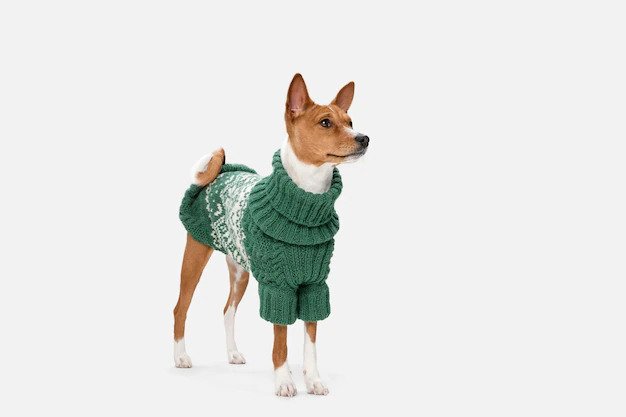
Sweaters
Are you among those people who enjoy putting clothes on their dogs? Many owners, especially those who have a dog of a small breed, put clothes on their paw friends for various reasons due to the low temperature outside, or because they want their dogs to be fancy and represent the holiday spirit. It is essential to remember to not put any clothes on your cat or dog, which may obstruct breathing, cause them to pant, or make them feel uncomfortable. Also, clothes should not have any decorations on them, which your paw friend may swallow.
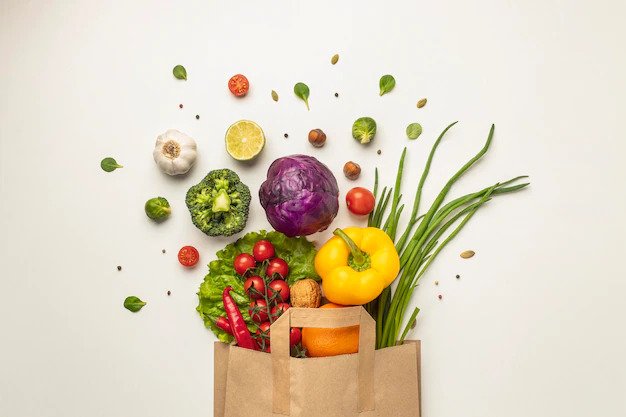
Bags
When it comes to curiosity, there is nothing that can compare to our doggies and kitties desire to sniff every part of their environment, especially if there is food around. Talking about holidays, you should be very careful when bringing shopping bags home, full of products for a holiday lunch or dinner. Do not let your shopping bags unattended, especially if they contain food that is toxic for pets.

Visitors
By visitors, we mean all types of people who will come by, including family members, friends, neighbors, delivery men...etc. All the chaotic and sometimes even hectic atmosphere that is likely to occur, may have a very negative impact on your pet. He/she is likely to hide or at least go to a quiet room where he/she can relax uninterrupted. However, guests visiting your home may also have the opposite effect on your paw friend. He/she may jump, bark, sniff around and get excited. It is important that you help your paw friend remain calm. Basic obedience training would be very helpful in this case.




